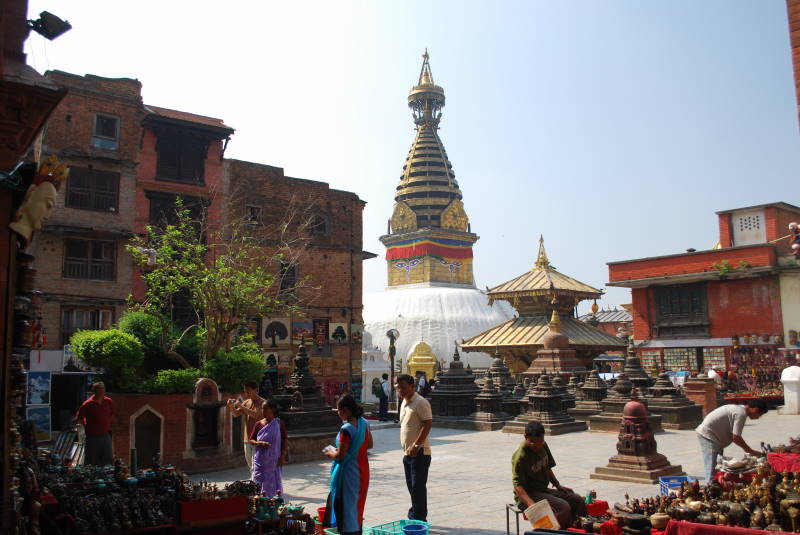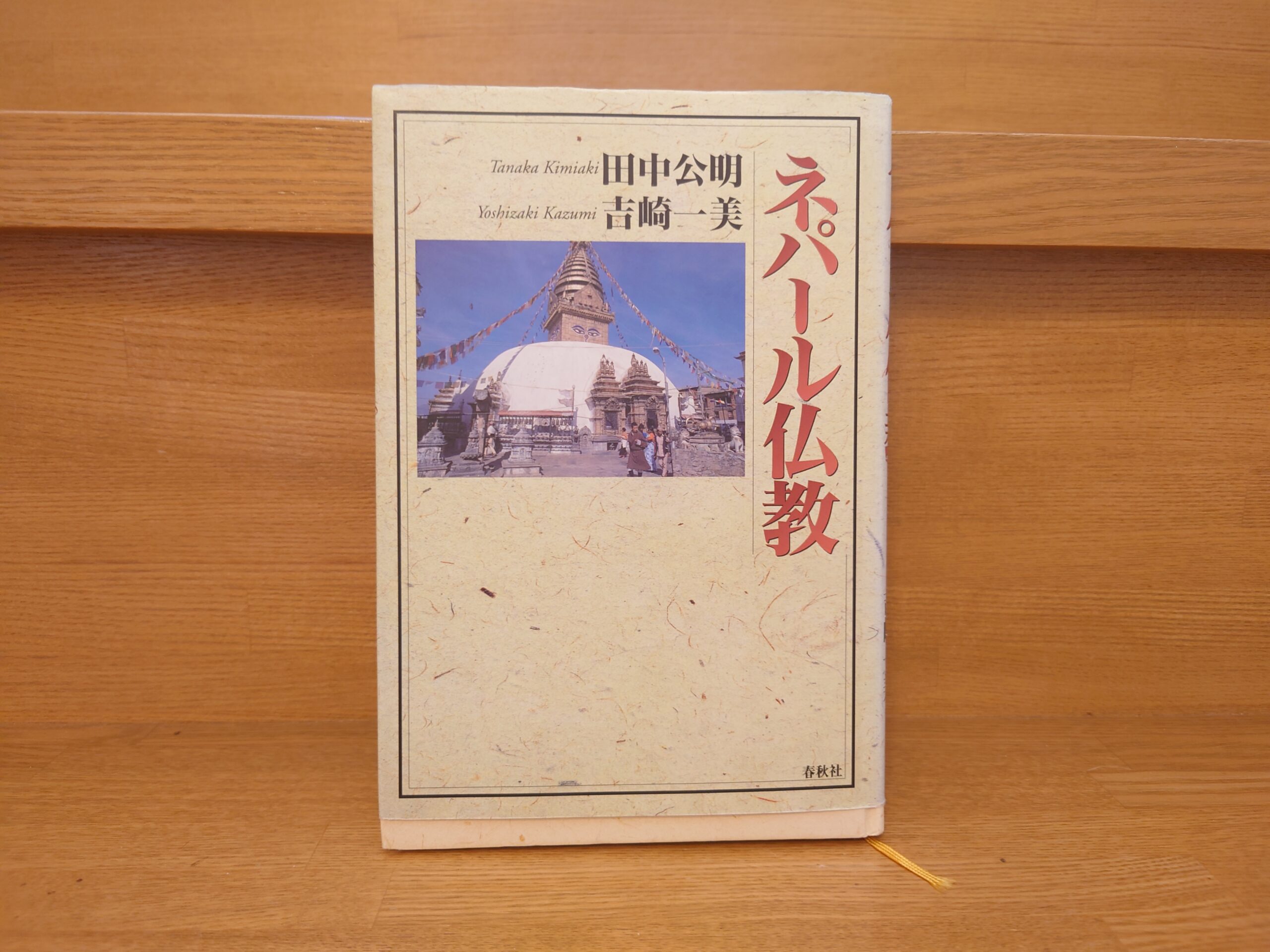Kimiaki Tanaka/Kazumi Yoshizaki "Nepalese Buddhism" Summary and Impressions - A country where wife-oriented Buddhism is rooted the same as in Japan. Recommended to learn about its teachings and history.
Introduced here is "Nepalese Buddhism" by Kimiaki Tanaka and Kazumi Yoshizaki, published by Shunju-sha in 1998.
Let's take a quick look at the book.
The first book in the world to provide an overview of Buddhism in Nepal, the land associated with Buddha! This book comprehensively explains the reality of Nepalese Buddhism, which is still alive in the Kathmandu Basin, from the four aspects of "history and Buddhist monuments," "literature and its contents," "dignities and art," and "rituals and events. Includes 130 valuable illustrations, maps, chronologies, etc.
This is the first book in the world to comprehensively explain the reality of Nepalese Buddhism as traditionally transmitted to the Newars living in the Kathmandu Basin from four aspects: history and Buddhist monuments, literature and its contents, dignities and art, and rituals and events. It also includes many valuable illustrations.
AmazonProducts Page.
First of all, let me say this. This book is a tremendously valuable gem.
For us Japanese, Nepal has a strong image of the Himalayas, but in reality, we know very little about the religion of this country. I myself knew almost nothing about this country until recently.
However, the more one learns about the religious situation in this country, the more interesting it becomes...!
First of all, although Hinduism is the main religion in this country, Buddhism is still alive and well. Moreover, some of the Buddhists in this country are wife-oriented, just like ours in Japan. This is interesting, isn't it?
The introduction to this book describes the book and Nepalese Buddhism as follows
Most tourists visiting Nepal land in the Kathmandu Basin, surrounded by Himalayan foothills. There, they are struck by the world's unique wooden temple architecture and Buddhist art in the souvenir shops that line the streets. The fact that Buddhism is still alive in Nepal, unlike in India, where the Buddhist tradition has been cut off, is becoming widely known to the general Japanese public.
However, in tourist guides, one can still find statements such as "Nepal is a Hindu country, but Tibetan Buddhism is also practiced" or "Hinduism and Buddhism are intermingled. Even publications that must be academically accurate confuse Nepalese Buddhism with Tibetan Buddhism. Furthermore, the ignorance of Nepalese people in general about Buddhism has amplified the misunderstanding of Nepalese Buddhism.
And what this book calls "Nepalese Buddhism" is only the traditional Buddhism of the Newars, the original inhabitants of the Kathmandu Basin. The Buddhism of the Tibetan minorities in the Himalayan region and the Buddhism of the Southern tradition introduced in modern times are the Buddhism of the Kingdom of Nepal, but they are not unique to Nepal and should be called "Tibetan Buddhism" and "Theravada Buddhism" respectively (the term "Hinayana" is not used because it is a demeaning term and is confusing with the tribal Buddhism said to have existed in ancient Nepal). (The term "Hinayana" is not used because it is a demeaning term and is confusing with the tribal Buddhism that is said to have existed in ancient Nepal.
As will be discussed in the following sections, Nepalese Buddhism is not the majority in contemporary Nepalese Buddhist circles. Tibetan Buddhism is the dominant religion in terms of number of followers and financial power, and Theravada Buddhism is the most active in terms of missionary activities and social reforms. Nevertheless, we are concerned about "Nepalese Buddhism" because it is a unique religion that is not found anywhere else in the world, and it is of great significance to the study of Buddhism not only in our country but also in the world.
Shunju-sha, Kimiaki Tanaka and Kazumi Yoshizaki, Nepalese Buddhism, p3-4
And then it goes on to say
So what kind of Buddhism is Nepalese Buddhism? Nepalese Buddhism can be defined as a non-sectarian Buddhism without an ordained order, carried out by a section of the Newari Buddhists.
The Newars are natives of the Kathmandu Basin, and their mother tongue is Newari, a Tibeto-Burmese language. They vigorously ingested Indian culture, including Hinduism, Buddhism, and Sanskrit, from India and created their own Newar culture.
Even after Buddhism died out in its homeland of India, it continued to thrive in the Kathmandu Basin, surrounded by the Himalayan foothills and supported by the devotion of the Newari Buddhists.
The structure of Newar society is unique in the world, with Hindu and Buddhist castes coexisting. Buddhism originally rejected the caste system, but under the long rule of Hindu law, Nepalese Buddhism accepted the caste system and survived by caste-izing the Buddhists. (omitted).
The current state of Nepalese Buddhism is a unique simulation model for medieval Indian Buddhism, in which both the ordained Mahayana and the ordained esoteric Buddhism coexisted within the Hindu society.
Shunju-sha, Kimiaki Tanaka and Kazumi Yoshizaki, Nepalese Buddhism, p. 5-7

Even if we speak of Nepalese Buddhism in one word, there are many different sects there. Within Nepal, there are three major frameworks: Nepalese Buddhism, Tibetan Buddhism, and Theravada Buddhism, each with its own history.
This book will focus on Nepalese Buddhism, which has long taken root in Nepal. The book also includes a wealth of explanations about temples in the capital city of Kathmandu and the surrounding towns, which is very helpful in understanding Buddhism in Nepal. This is a very valuable guide to Nepalese Buddhism, as there are only a few books on Nepal.
In this book, you will witness a unique history of Buddhism that is different from that of India, Sri Lanka, Thailand, or China. This book is a masterpiece that gives us a great insight into what Japanese Buddhism is all about. I highly recommend this book.
Why not pick one up?
The above is "Kimiaki Tanaka/Kazumi Yoshizaki, "Nepalese Buddhism" - A country where wife-oriented Buddhism takes root, just like in Japan. Recommended to learn about its teachings and history".
Next Article.
Click here to read the previous article.
Related Articles





































